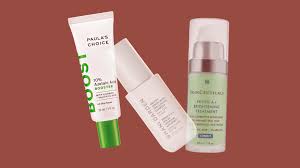
How Many Times Should You Use Azelaic Acid for Clear, Healthy Skin?
If you’ve been exploring acne-fighting skincare ingredients, you might have noticed azelaic acid doesn’t always get the spotlight it rightfully deserves—yet its benefits are worth a closer look.
Unlike trendier acids like salicylic or glycolic, azelaic acid works quietly in the background, treating breakouts, fading pigmentation, and soothing inflammation with surprising effectiveness.
Often overshadowed by other powerhouse ingredients, azelaic acid still holds its own, especially for people with sensitive skin, rosacea, or those who can’t tolerate stronger exfoliants.
But with all its skin-healing magic, a common question still lingers—how many times should you actually use azelaic acid in your skincare routine?
Should it be used daily, twice a day, or only a few times per week to avoid side effects while still reaping the benefits?
The answer largely depends on your skin type, the formulation you’re using, and how your skin responds to this potent yet gentle exfoliating acid.
Before diving into frequency, it’s helpful to understand exactly what azelaic acid is and why it deserves a place in your routine.
What Is Azelaic Acid and Why Should You Use It?
Azelaic acid is a naturally occurring dicarboxylic acid derived from grains like barley, rye, and wheat, though most skincare products use a lab-synthesized version for stability and safety.
This unique compound gently exfoliates the skin, unclogs pores, reduces inflammation, and fades post-acne marks without causing major irritation, making it a great option for sensitive skin.
It also has antimicrobial properties, meaning it can kill acne-causing bacteria while simultaneously calming redness and boosting overall skin clarity.
Unlike some other actives, azelaic acid is well tolerated by most skin types and rarely leads to over-exfoliation, peeling, or purging if introduced properly and gradually.
How Often Should You Use Azelaic Acid?
Most dermatologists recommend starting with a small amount of azelaic acid—about a pea-sized drop—and applying it evenly over the face and neck once daily to begin with.
Whether your product is prescription-strength or an over-the-counter (OTC) formula, ease your skin into the new routine slowly to avoid potential stinging or dryness.
If you’re new to azelaic acid, apply it every other day at first, giving your skin time to build tolerance and adjust to the exfoliating and antibacterial effects.
Once your skin shows no signs of irritation—such as redness, itching, or increased dryness—you can increase application to once a day, ideally in the evening.
After a few weeks of consistent use and no negative reactions, some people find they can use azelaic acid twice a day: morning and night, for maximum benefits.
Can Azelaic Acid Be Used Every Day?
Yes, you absolutely can use azelaic acid every day, and in fact, regular use is key to seeing improvements in acne, rosacea, and uneven skin tone over time.
Before incorporating it daily, perform a 24-hour patch test on your jawline or inner arm to check for any adverse reactions like burning or prolonged redness.
If the test goes smoothly, begin using azelaic acid once daily at night, then increase to twice daily if your skin tolerates it well over a few weeks of use.
Those with more sensitive or reactive skin may prefer to stick to once daily or even three to four times a week to prevent overdoing it.
To start slow, use azelaic acid in a wash-off product like a cleanser—these rinse-off formulas are generally milder and help skin ease into contact with the ingredient.
For best results, always follow azelaic acid with a deeply hydrating moisturizer that contains humectants like hyaluronic acid to combat dryness and support the skin barrier.
Since azelaic acid mildly exfoliates, applying daily sunscreen of SPF 30 or higher is critical to protect your skin and prevent UV-related dark spots and sensitivity.
When Should You Apply Azelaic Acid in Your Routine?
The best time to apply azelaic acid depends on the product’s formulation—whether it’s a serum, cream, gel, or cleanser—all of which determine its place in your regimen.
In general, apply your skincare products from the thinnest consistency to the thickest to ensure proper absorption and avoid blocking actives from penetrating the skin.
If you’re using azelaic acid as a serum, apply it after cleansing and toning, but before your moisturizer, to allow the active to work closer to the skin.
Using an exfoliating toner with AHAs or BHAs beforehand (if your skin tolerates them) can help remove dead cells and allow azelaic acid to absorb more effectively.
However, if you have sensitive or reactive skin, skip other exfoliants and focus solely on azelaic acid to avoid layering too many active ingredients.
For added hydration and support, pair it with a gentle moisturizer and a soothing facial mist or barrier-repairing serum if needed.
Can You Use Azelaic Acid Twice a Day?
Yes, once your skin has acclimated, using azelaic acid twice a day can amplify results, especially for acne-prone or rosacea-affected skin types needing ongoing inflammation control.
Despite the word “acid” sounding intense, azelaic acid is one of the mildest chemical exfoliants available and is often prescribed for daily, even twice-daily, use.
Its gentle mode of action helps regulate cell turnover, reduce clogged pores, and prevent breakouts without causing excessive peeling or barrier disruption.
Many people find that twice-daily use speeds up improvements in texture, tone, and clarity—especially for persistent issues like bumps, redness, and discoloration.
Just be sure to support your skin with plenty of hydration and sunscreen to avoid any cumulative irritation from overuse, particularly if using other actives.
What Should You Avoid Mixing with Azelaic Acid?
While azelaic acid plays well with many ingredients, avoid using it alongside other strong exfoliants like salicylic acid or benzoyl peroxide in the same routine.
Combining too many potent actives can increase the risk of redness, peeling, and dryness—especially for those with sensitive skin or damaged moisture barriers.
Stick to alternating days when using stronger ingredients, or apply azelaic acid in the morning and other actives at night to prevent overwhelming your skin.
Though azelaic acid does not increase sun sensitivity like some AHAs, daily SPF is still essential to protect your skin and preserve its healing benefits.
Should You Wash Off Azelaic Acid After Applying It?
No, leave-on azelaic acid treatments like serums and creams should not be rinsed off—doing so would limit the amount of time the active has to work on your skin.
Products with 10% to 20% azelaic acid are meant to remain on the skin so they can provide continuous exfoliating, antibacterial, and anti-inflammatory benefits.
Always allow the product to fully absorb before applying any additional layers such as moisturizer or sunscreen to ensure optimal performance.
Is It Normal for Azelaic Acid to Sting or Tingle?
A slight tingling or stinging sensation is normal when first using azelaic acid, especially if your skin is new to chemical exfoliants or if the concentration is on the higher side.
Mild side effects like burning, redness, or itching often subside after a few uses as your skin adjusts to the new active ingredient in your routine.
If stinging persists or worsens, reduce usage frequency or switch to a lower-strength product while maintaining hydration and barrier-repairing ingredients.
Always check with a dermatologist if you’re unsure whether your skin’s reaction is normal or indicates a more serious sensitivity or allergy.
What Ingredients Pair Well with Azelaic Acid?
Some of the best companion ingredients to azelaic acid include niacinamide, hyaluronic acid, panthenol, and gentle alpha hydroxy acids like lactic or mandelic acid.
Niacinamide enhances the brightening and anti-inflammatory benefits, while hyaluronic acid helps replenish moisture and prevent dryness from exfoliation.
You can alternate stronger exfoliants like glycolic acid or retinol on opposite days to avoid overloading your skin but still gain anti-aging or resurfacing benefits.
By choosing the right product combinations and adjusting frequency based on your skin’s response, you can maximize results while minimizing any potential irritation.
Azelaic acid is also safe for long-term use, even for individuals dealing with chronic skin concerns like melasma, acne, or rosacea.
Final Thoughts: Is Azelaic Acid Worth It?
Absolutely—azelaic acid is a gentle but effective ingredient that fits seamlessly into almost any skincare routine and offers long-term improvements in clarity, tone, and texture.
Its versatility, low irritation potential, and range of benefits make it a reliable choice for people looking to treat breakouts, redness, and discoloration in one go.
Whether you’re using it once a day or working up to twice-daily applications, consistent use is the key to unlocking its full potential for healthier-looking skin.
So if you’ve been hesitant to try this underrated ingredient, consider this your sign to give it a go—it might just become your new skincare essential.


